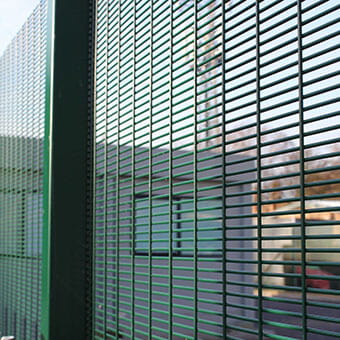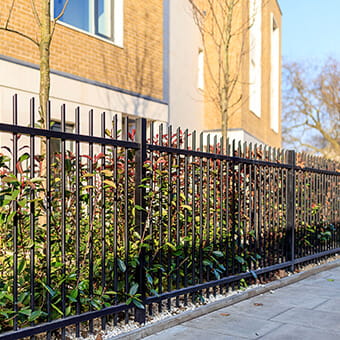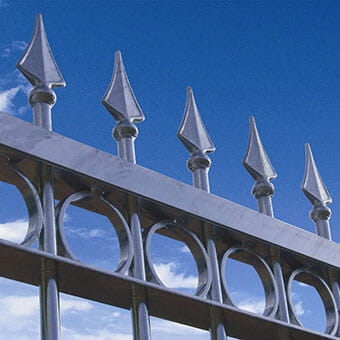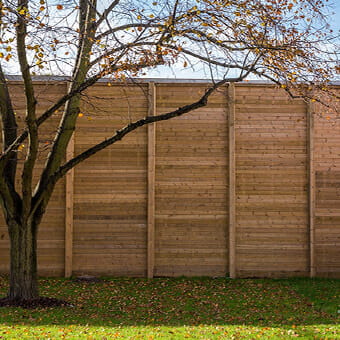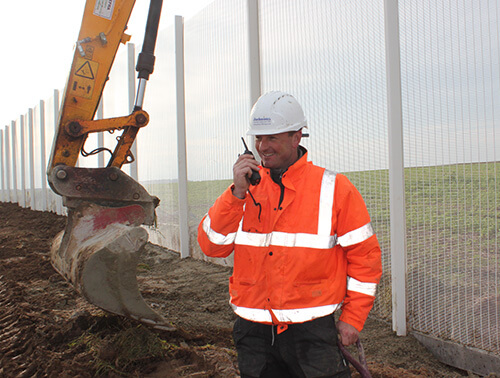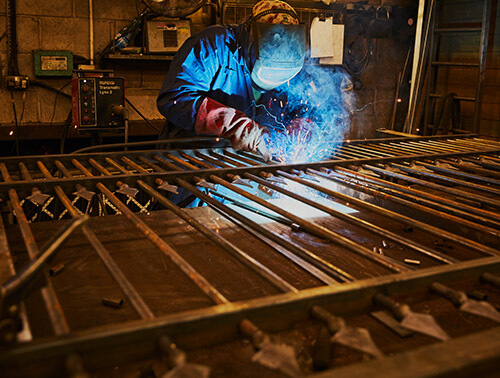Our other sites:
When selecting a security fence, there are several factors to take into consideration to guarantee optimal results and maximum protection for your site or property. One consideration should be height.
We are often asked how tall security fencing should be but this can vary between applications depending on requirement and environment. Generally speaking, 2 metres is considered a safe and reliable height; anything under this would be easy for trespassers to climb and therefore be better suited for demarcation or decoration.
There are many risks that security fencing aims to combat through its height, design, and installation, including digging under, climbing over, and penetration through the fence.
The risk that the question about height is addressing is climbing, but height is not the only factor that determines a fence’s climb resistance. To help find the right security fencing solution for your application, this blog will examine the different designs available and how each one could be of benefit to you.
Metal railings
A popular style for residential areas and parks, metal railings offer a robust yet attractive line of defence. Being comprised of metal, an incredibly versatile material, there is a wide selection of designs available to suit each application. Our metal railings come with tamper-proof fittings and fixings and a range of matching swing and sliding gates, both in automated and manual format, to ensure optimum levels of security on every site. All our metal railings are made from tubular steel to provide strength and ease of installation; a modern take on traditional iron railings. Metal railings usually only come in heights up to two metres and are used for demarcation and decorative purposes.
Vertical bar fencing
Our vertical bar fencing shares similar features as our metal railings but is less decorative and comes in taller heights. There are a number of intimidating designs with in-built climbing deterrents such as barbed spikes on each pale or cranked pales. However, if you are looking for a vertical bar fence with a decorative touch, Barbican with Finials is ideal. Vertical bar fencing is highly versatile, making it appropriate for a number of applications including schools, government-approved sites and commercial properties. Our range of vertical bar fencing and gates are made with galvanised tubular steel and feature effective welded pale-through-rale construction and vandal-proof connectors to mitigate climbing and vandalism. They can also be used in tandem with surveillance technology due to the narrow pales which provide good visibility.
Welded mesh panels
Creating an ‘invisible’ screen, mesh security fencing offers high visibility without compromising visibility or CCTV; ideal for all applications from school and sports facilities to commercial properties and high security sites. Jacksons’ mesh panels are available at different heights to suit requirements and come with posts that are adaptable for security toppings, cameras and lighting. Various designs of welded mesh panels are available, including 358 mesh which has tightly knit apertures to prevent foot and fingers holds and double skin 358 mesh which closes the apertures further.
Fencing Design
Ultimately, the taller a fence is, the harder it will be for trespassers to scale it. However, when it comes to security, there are other factors such as fence design which should be considered in addition to height. Fences with horizontal pales, for example, are inappropriate for applications where security is concerned because they can act as a ladder, aiding any individuals who attempt to climb it.
As an additional security measure against climbing, fences should be topped either with spikes or other toppings like barbed wire or tape. Mesh designs are often favoured for security fencing on account of their difficulty to climb, particularly variations such as 358 Mesh (Prison Mesh), or double skin mesh that eliminate foot and finger holds. Our Securi-Mesh® is tested to standard (and exceeds Home Office specifications for use in prisons) to ensure optimal protection against a range of threats.
The surrounding area should also be taken into account when deciding on the positioning of a security fence, particularly if immovable and climbable objects like lampposts and telephone poles are in close vicinity of the site.
Aesthetics
Whilst security fencing should first and foremost offer a solid line of defence, it shouldn’t come at the cost of appearance. Planning regulations often state that fencing needs to fit in with the surrounding environment, and this is particularly important in places like schools, care homes, residential properties, office premises and even some commercial premises to ensure a hostile environment is not created.
Tall fencing has the potential to be imposing on surrounding properties; security fencing in particular is often designed to provide a visual deterrent. Where planning permissions are restrictive, vertical bar fencing is the ideal solution; it looks smart whilst also providing a good level of climb resistance due to its pales which extend through the top rail. Jacksons’ Barbican Defender Xtreme, with its cranked pales, was used at a data centre within a residential area where a high level of security was required without the use of barbed wire and spikes.
Acoustic barriers are a solid alternative to steel fencing, especially if the appearance of timber is preferred over metal. These fences are generally tall by nature to provide a good level of noise reduction and this also makes them secure, provides privacy and concealment, and makes them difficult to climb due to their solid flat profile.
Application
Different sites have different requirements for security fences, for example the UK Government specify that prison fencing must be at least 3m high. On the other hand, for schools and other educational facilities, 1.8-2.4m is considered a good height for fencing, and security toppings should be avoided to prevent creating a hostile environment.
There are very rigid regulations surrounding CNI sites. Fences are NPSA rated (previously CPNI) for a number of reasons, but one requirement relates to height which is usually 3m tall; the most appropriate height for security fences around CNI sites.
Our related blog post about standard fence heights discusses common and recommended fence heights for various sectors whether to provide security or demarcation.
At Jacksons, we offer a wide range of secure perimeter solutions suitable for all applications. For help with specifying, selecting and installing a security fence, contact our team today.
Related products
Jacksons Security has a range of products relating to this article, all complete with our 25 year service life guarantee. If you cannot find the item you are looking for, please do not hesitate to call our friendly sales team.
Related Content
Top
